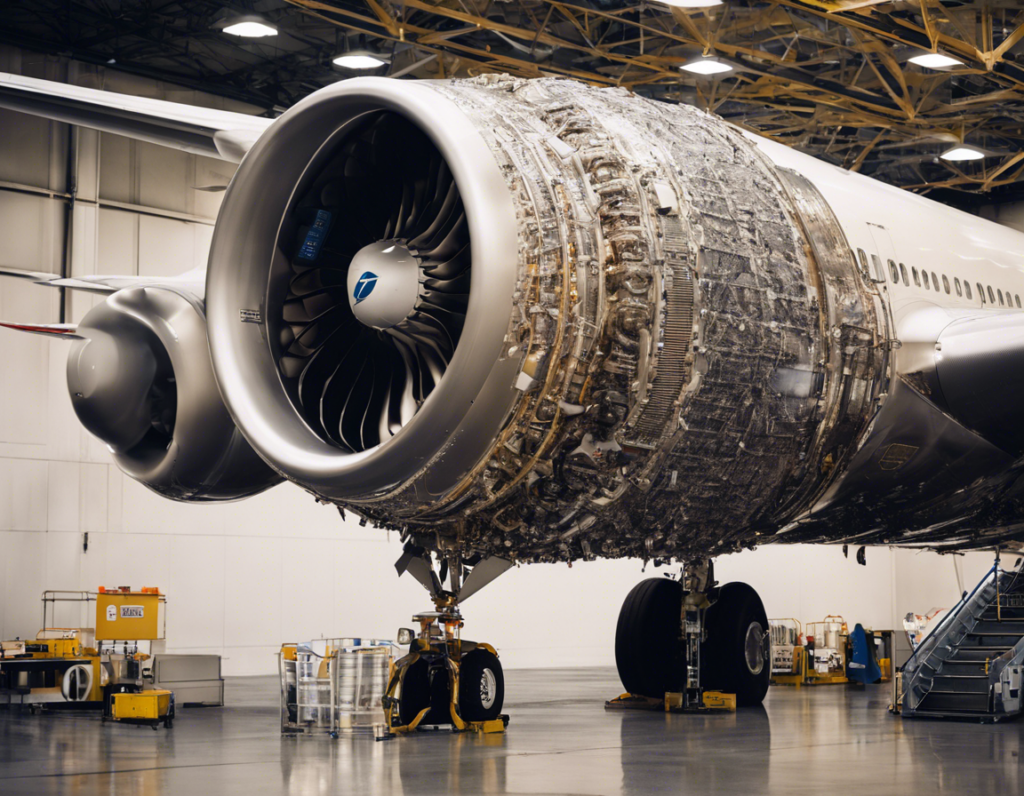The engine covers of Boeing planes are a crucial component of the aircraft that often go unnoticed by passengers. These covers, also known as nacelles, play a vital role in the overall operation and safety of the aircraft. In this article, we will delve into the importance of Boeing plane engine covers and the various functions they serve in ensuring a smooth and safe flight experience.
Understanding Boeing Plane Engine Covers
What are Engine Covers/Nacelles?
The engine covers, or nacelles, are the streamlined aerodynamic shells that enclose the aircraft’s engines. They are typically attached to the wings or fuselage of the aircraft and serve several important functions beyond just housing the engines.
The Role of Engine Covers in Aerodynamics
One of the primary functions of engine covers is to improve the aerodynamics of the aircraft. By enclosing the engines within streamlined nacelles, drag is reduced, which helps to increase fuel efficiency and overall performance. The design of the nacelles is carefully engineered to minimize air resistance and turbulence, optimizing the airflow over the wings and fuselage.
Protection and Safety
In addition to aerodynamics, engine covers also provide crucial protection for the aircraft’s engines. They shield the engines from external elements such as debris, bird strikes, and adverse weather conditions. This protection is essential for ensuring the safety and reliability of the engines during flight.
Noise Reduction
Engine covers also play a role in reducing noise levels both inside and outside the aircraft. The design of the nacelles includes sound-absorbing materials and structures that help dampen engine noise, making the flying experience more comfortable for passengers and reducing noise pollution in the surrounding environment.
The Importance of Engine Covers in Boeing Planes
Enhancing Performance and Efficiency
Boeing plane engine covers are meticulously designed to optimize performance and efficiency. By reducing drag and improving aerodynamics, the nacelles contribute to fuel savings and overall operational efficiency. This is especially critical for long-haul flights where every drop of fuel counts.
Ensuring Engine Reliability
The protection provided by engine covers is essential for ensuring the reliability and longevity of the aircraft’s engines. By shielding the engines from potential damage and wear, the nacelles help prevent costly maintenance issues and ensure that the engines perform optimally throughout their lifespan.
Compliance with Safety Regulations
Boeing plane engine covers are designed and manufactured in compliance with stringent safety regulations and industry standards. These regulations cover aspects such as crashworthiness, fire resistance, and structural integrity to ensure the highest level of safety for passengers and crew members.
Contributing to Passenger Comfort
In addition to safety and performance, engine covers also contribute to passenger comfort during flight. By reducing noise levels and vibrations from the engines, the nacelles help create a quieter and smoother flying experience, enhancing overall passenger satisfaction.
Common FAQs about Boeing Plane Engine Covers
1. Why are engine covers sometimes opened during maintenance?
During maintenance checks, engineers may need to access the engines for inspections or repairs. In such cases, the engine covers are opened to provide easy access to the engine components.
2. Can engine covers be replaced if damaged?
Yes, damaged engine covers can be replaced. Boeing and other aircraft manufacturers have protocols in place for assessing and replacing damaged nacelles to ensure the safety and operational integrity of the aircraft.
3. How often are engine covers inspected for wear and tear?
Engine covers undergo regular inspections as part of routine maintenance schedules. The frequency of these inspections may vary depending on factors such as flight hours, operating conditions, and regulatory requirements.
4. Do engine covers affect the weight and balance of the aircraft?
Engine covers are carefully designed to minimize added weight while maintaining the balance and stability of the aircraft. Engineers take into account factors such as material strength, weight distribution, and aerodynamic considerations to ensure optimal performance.
5. Are there different types of engine covers for different Boeing aircraft models?
Yes, engine covers are customized to suit the specific requirements of different Boeing aircraft models. Each model may have unique design features and specifications that are tailored to its engine characteristics and operational parameters.
In conclusion, Boeing plane engine covers are more than just protective shells for aircraft engines – they are integral components that contribute to the safety, performance, and comfort of the aircraft. Understanding the importance of engine covers underscores their critical role in ensuring smooth and efficient flight operations. By prioritizing the design, maintenance, and compliance of engine covers, Boeing upholds its commitment to excellence in aviation safety and engineering innovation.
